
Color, 1969, 93m.
Directed by Alf Silliman Jr.
Starring Christina Hart, Ronald South, William Condos, Angelique de Moline, Paula Erikson, Kathy Ferrick, Monica Gayle
Kino Lorber (Blu-ray & DVD) (US RA/R1 HD/NTSC), Shout! Factory (DVD) (US R1 NTSC)

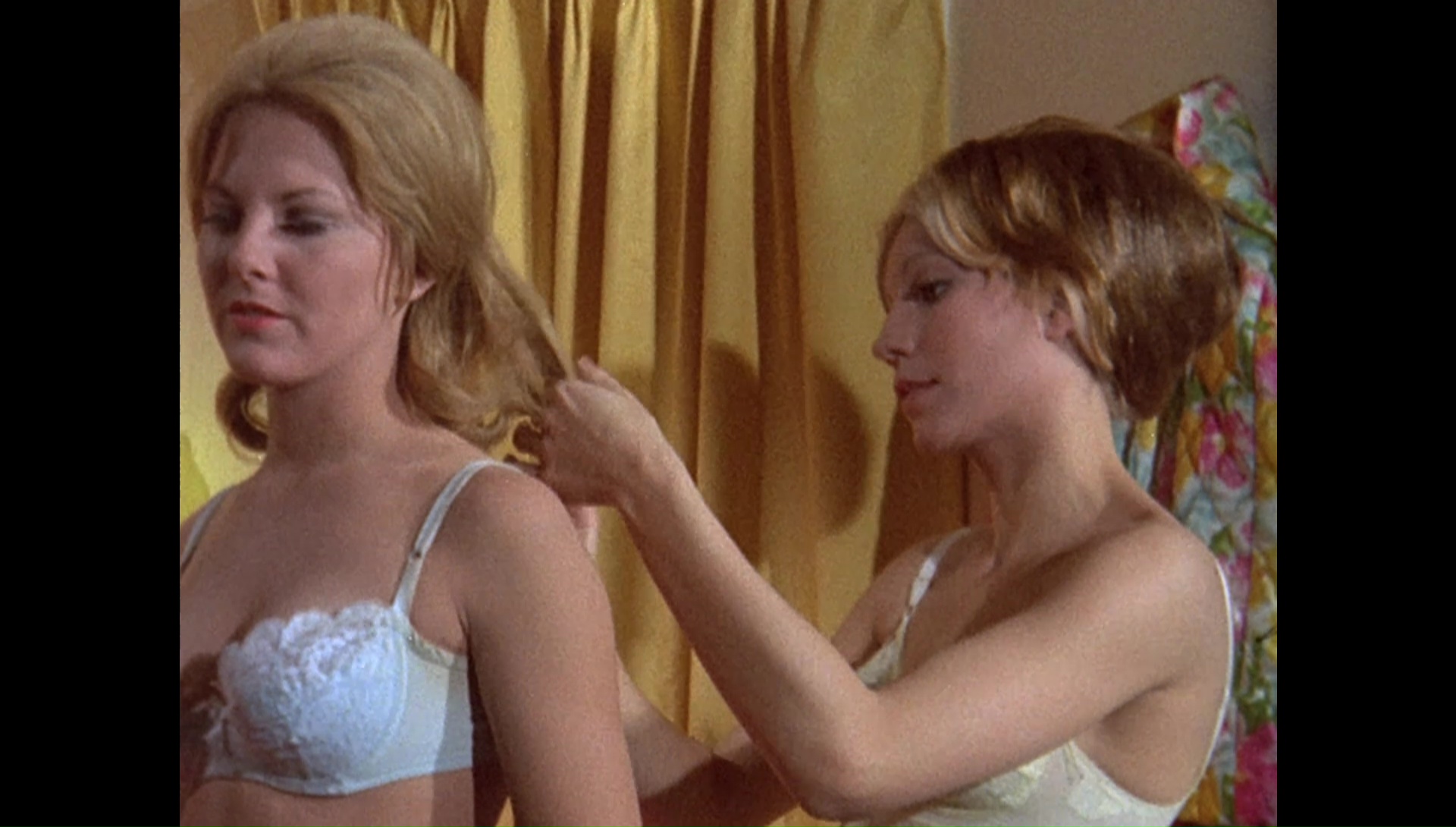
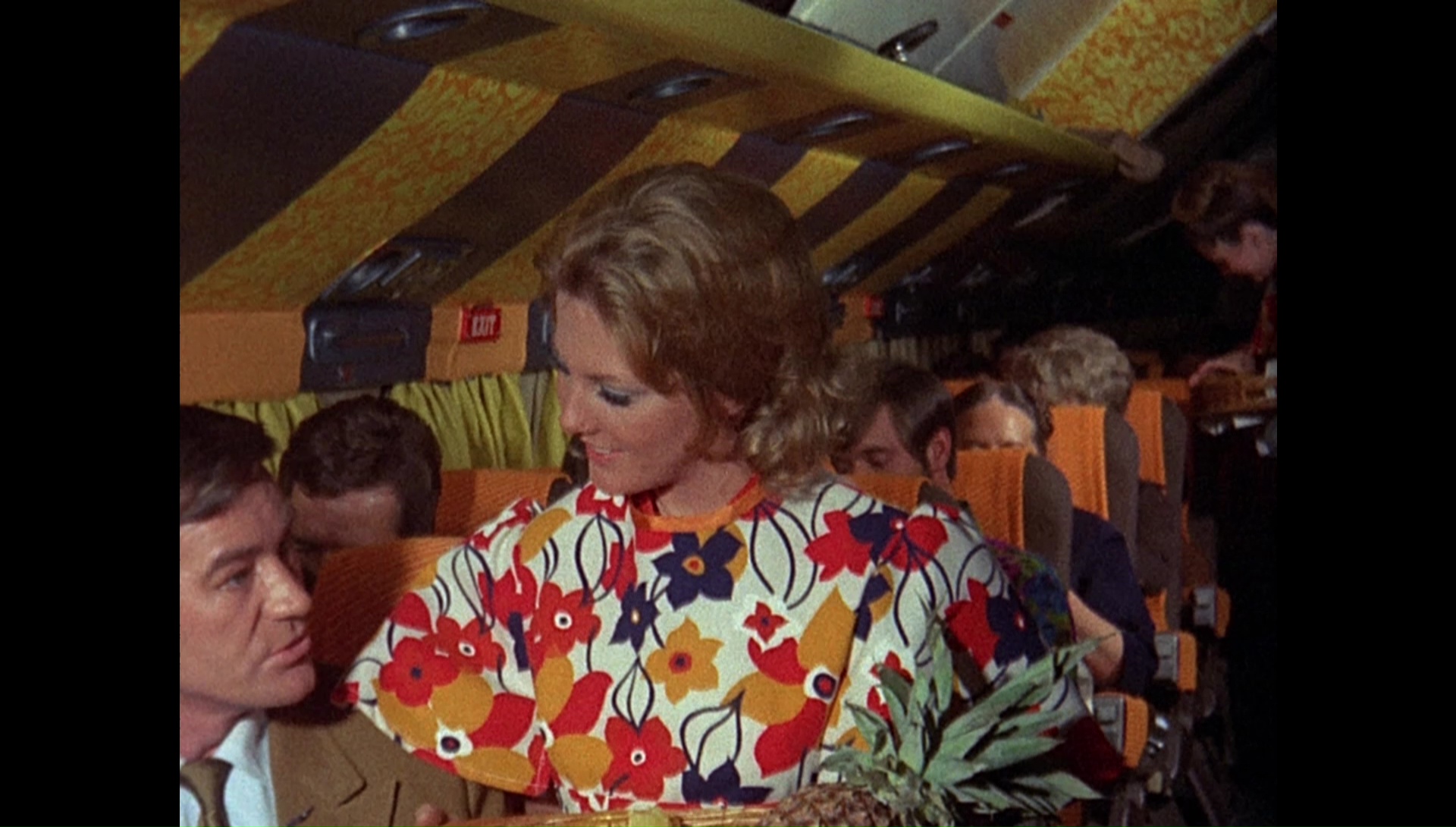 If you ever wondered what a Doris Wishman film in 3-D might look like, feast your eyes on The Stewardesses, a massively successful softcore smash cobbled together in Los Angeles with a minimal storyline, rampant nudity, deranged framing, and a completely post-dubbed soundtrack. Roger Corman later made a mint with a string of films about groups of stewardesses, student nurses, and other young professional women getting into sexy trouble around the globe, but this one got their first and did it weirder.
If you ever wondered what a Doris Wishman film in 3-D might look like, feast your eyes on The Stewardesses, a massively successful softcore smash cobbled together in Los Angeles with a minimal storyline, rampant nudity, deranged framing, and a completely post-dubbed soundtrack. Roger Corman later made a mint with a string of films about groups of stewardesses, student nurses, and other young professional women getting into sexy trouble around the globe, but this one got their first and did it weirder.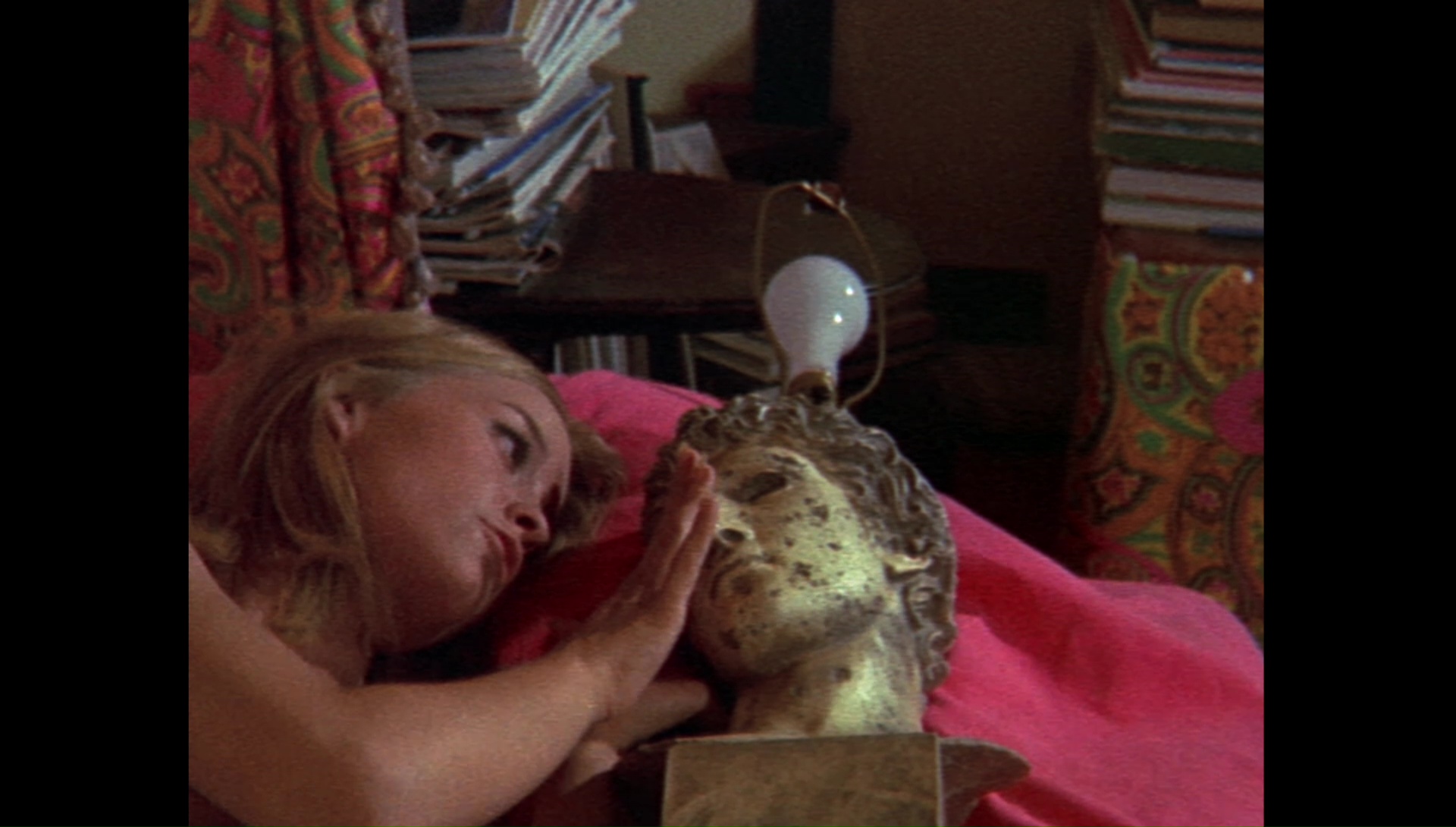 Weird popped up in the early '90s representing the
Weird popped up in the early '90s representing the 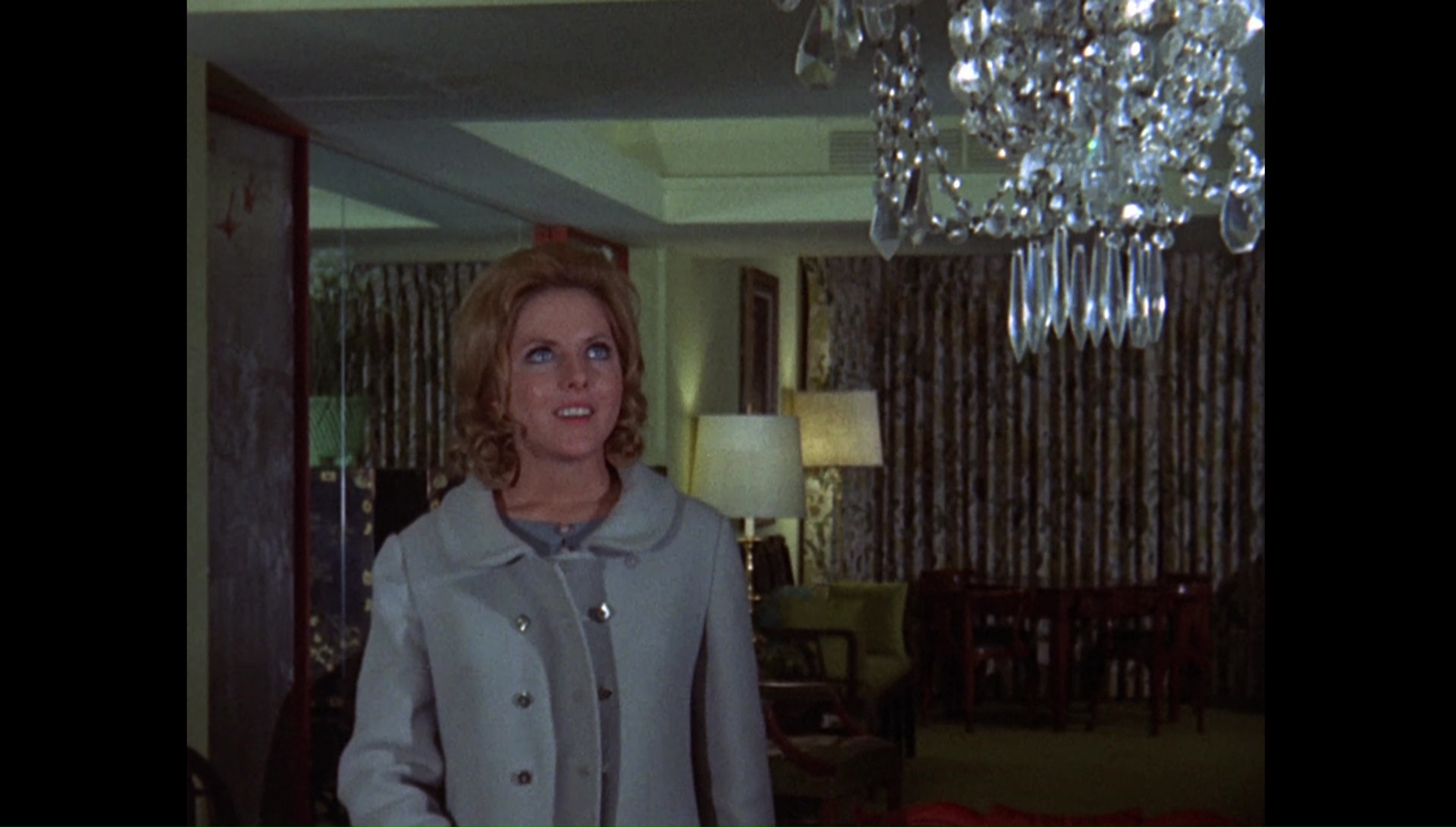 shortest and mildest cut (a sparse 69 minutes), with the lesbian and haunted house sequences entirely omitted. The Stewardesses first bowed on DVD in 2009 from Shout! Factory in a two-disc set sporting anaglyph (red and blue) 3-D versions in color and black-and-white, as well as the color 2-D version (all interlaced), featuring the longest version around at 92 minutes (primarily a greatly extended version of the lesbian love scene). The 3-D on this release is something of an eyesore and little indication of how this looked in theaters, but it does feature a fun SCTV stewardess comedy sketch ("Dr. Tongue's House of Stewardesses"), an 11-minute "A Short History of 3-D" featurette, a 6-minute 3-D lens test with actresses shoving various objects at the screen, 9 minutes of minor outtakes and extended shots, a 3-minute "How It Was Shot and Shown" featurette, the trailer, the original simpler 1969 opening credits, and a 21-minute "How the Stewardesses Took Off" featurette with Silliphant, actor Bill Condos, producer/director of photography Chris Condon, Christina Hart, writer Eric Schaefer, and more talking about the 3-D shooting process and the film's shockingly successful theatrical performance.
shortest and mildest cut (a sparse 69 minutes), with the lesbian and haunted house sequences entirely omitted. The Stewardesses first bowed on DVD in 2009 from Shout! Factory in a two-disc set sporting anaglyph (red and blue) 3-D versions in color and black-and-white, as well as the color 2-D version (all interlaced), featuring the longest version around at 92 minutes (primarily a greatly extended version of the lesbian love scene). The 3-D on this release is something of an eyesore and little indication of how this looked in theaters, but it does feature a fun SCTV stewardess comedy sketch ("Dr. Tongue's House of Stewardesses"), an 11-minute "A Short History of 3-D" featurette, a 6-minute 3-D lens test with actresses shoving various objects at the screen, 9 minutes of minor outtakes and extended shots, a 3-minute "How It Was Shot and Shown" featurette, the trailer, the original simpler 1969 opening credits, and a 21-minute "How the Stewardesses Took Off" featurette with Silliphant, actor Bill Condos, producer/director of photography Chris Condon, Christina Hart, writer Eric Schaefer, and more talking about the 3-D shooting process and the film's shockingly successful theatrical performance. 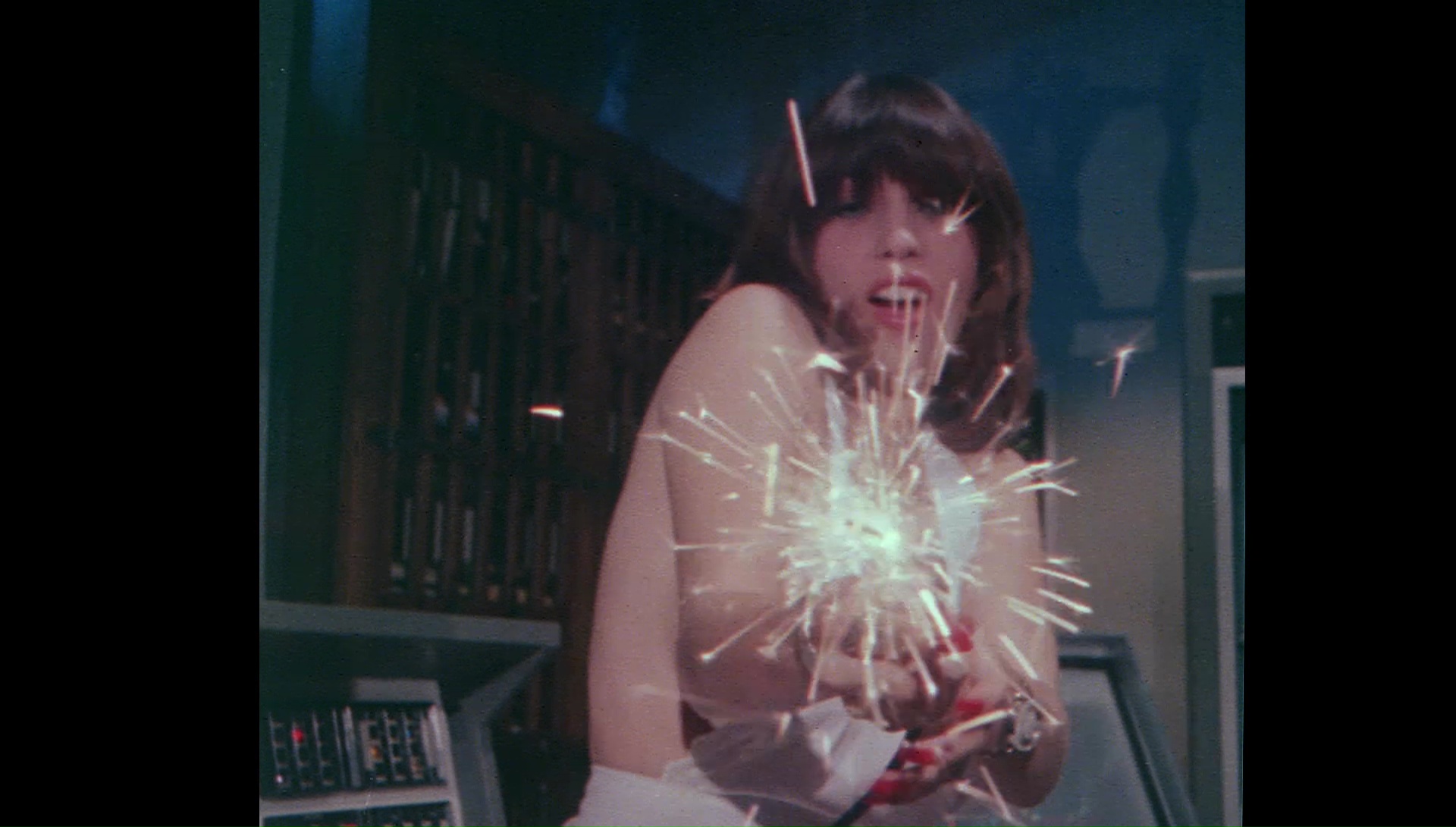 out far more effectively here than the prior release (the flat frame grabs here really don't do it justice); the highlight is easily the amusement park sequence, with the haunted house bit throwing a skull right up to your nose for several seconds. Not so much of a highlight is a moment when a guy shoves his calloused, dirty feet at the camera for far too long, but it can't all be pleasant.
out far more effectively here than the prior release (the flat frame grabs here really don't do it justice); the highlight is easily the amusement park sequence, with the haunted house bit throwing a skull right up to your nose for several seconds. Not so much of a highlight is a moment when a guy shoves his calloused, dirty feet at the camera for far too long, but it can't all be pleasant.  However, for many the real reason to pick up this disc might be the main bonus feature: 1977's Experiments in Love, an absolutely bonkers 3-D softcore short made by director Daniel L. Symmes to play with his outrageous John Lamb-penned porn film, The Starlets. (A flat version was also included on After Hours' DVD of Sex Freaks instead of their release of The Starlets and its sequel, where you would've expected it to turn up.) This is one you absolutely must watch in three dimensions though, as it gleefully shoves everything from bouncing breasts to yo-yos to pool balls to sparkling cables. The concept here is that a couple of busty ladies (one-shot Linda Gordon and curvy Mariwin Roberts, who headlined her own hardcore vehicle a year later) are working with a computer (complete with groping metal claws) in a lab papered with vintage 3-D movies to develop the ultimate three-dimensional film process, which will hopefully become a scientific thesis project(!). Meanwhile studly groundsman Max (Taboo star and adult film vet Mike Ranger, credited as "Michael Stapp") drifts in and out of their research, eventually bedding both of them in a frenzy of psychedelic 3-D effects complete with colorful swirling lights and a bizarre stylized view of the ladies' internal nether regions that must be seen to be believed. Like the main feature, this one features a soundtrack dubbed entirely in post (with some familiar '70s library music tracks percolating on the soundtrack) with some of the stupidest dialogue you've ever heard. Needless to say, this beats out Avatar or The Life of Pi as a major reason to get a 3-D TV.
However, for many the real reason to pick up this disc might be the main bonus feature: 1977's Experiments in Love, an absolutely bonkers 3-D softcore short made by director Daniel L. Symmes to play with his outrageous John Lamb-penned porn film, The Starlets. (A flat version was also included on After Hours' DVD of Sex Freaks instead of their release of The Starlets and its sequel, where you would've expected it to turn up.) This is one you absolutely must watch in three dimensions though, as it gleefully shoves everything from bouncing breasts to yo-yos to pool balls to sparkling cables. The concept here is that a couple of busty ladies (one-shot Linda Gordon and curvy Mariwin Roberts, who headlined her own hardcore vehicle a year later) are working with a computer (complete with groping metal claws) in a lab papered with vintage 3-D movies to develop the ultimate three-dimensional film process, which will hopefully become a scientific thesis project(!). Meanwhile studly groundsman Max (Taboo star and adult film vet Mike Ranger, credited as "Michael Stapp") drifts in and out of their research, eventually bedding both of them in a frenzy of psychedelic 3-D effects complete with colorful swirling lights and a bizarre stylized view of the ladies' internal nether regions that must be seen to be believed. Like the main feature, this one features a soundtrack dubbed entirely in post (with some familiar '70s library music tracks percolating on the soundtrack) with some of the stupidest dialogue you've ever heard. Needless to say, this beats out Avatar or The Life of Pi as a major reason to get a 3-D TV.